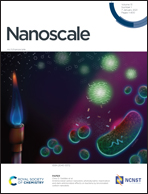Exploring the behaviors of electrode-driven Si quantum dot systems: from charge control to qubit operations†
Abstract
Charge stabilities and spin-based quantum bit (qubit) operations in Si double quantum dot (DQD) systems, whose confinement potentials are controlled with multiple gate electrodes, are theoretically studied with a multi-scale modeling approach that combines electronic structure simulations and the Thomas–Fermi method. Taking Si/SiGe heterostructures as the target of modeling, this work presents an in-depth discussion on the designs of electron reservoirs, electrostatic controls of quantum dot (QD) shapes and their corresponding charge confinements, and spin qubit manipulations. The effects of unintentional inaccuracies in DC control biases and geometric symmetries on the Rabi cycle of spin qubits are investigated to examine the robustness of logic operations. Solid connections to the latest experimental results are also established to validate the simulation method. As a rare modeling study that explores the full-stack functionality of Si DQD structures as quantum logic gate devices, this work delivers the knowledge of engineering details that are not uncovered by the latest experimental work and can serve as a basic but practical guideline for potential device designs.

- This article is part of the themed collection: Quantum computing and quantum information storage: Celebrating the 2022 Nobel Prize in Physics


 Please wait while we load your content...
Please wait while we load your content...